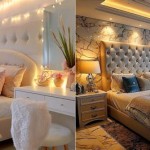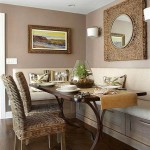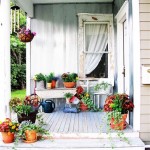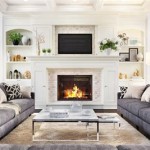Witch House Decorating Ideas: Cultivating an Atmosphere of Mysticism and Intrigue
Witch house decor is a unique and increasingly popular aesthetic that draws inspiration from occult practices, gothic architecture, and elements of nature. It aims to create a space that feels mysterious, spiritual, and connected to the unseen world. Unlike overtly spooky or Halloween-themed decorating, witch house embraces a subtler, more sophisticated approach to the macabre, incorporating symbolism and textures that evoke a sense of ancient wisdom and hidden knowledge. This style is not about recreating a stereotypical witch's cottage, but rather about curating a personal sanctuary that reflects an individual's interest in spirituality, folklore, and the darker side of beauty.
The core of witch house decor lies in its ability to blend contrasting elements, creating a comfortable yet captivating atmosphere. It often incorporates a muted color palette, natural materials, and found objects. The goal is to create a space that is both aesthetically pleasing and energetically charged, a place where one can feel connected to their intuition and personal power. Implementing witch house decor elements can enhance the ambiance of any living space, transforming it into a haven for contemplation, creativity, and spiritual exploration.
Key Elements of a Witch House Aesthetic
Several key elements contribute to the distinctive look and feel of witch house decor. These elements can be incorporated to varying degrees depending on individual preferences and the desired level of intensity. Understanding these fundamental aspects is crucial for successfully creating a coherent and authentic witch house environment.
Color Palette: Witch house decor typically favors a muted and atmospheric color palette. Dark hues such as black, charcoal gray, deep purples, and forest greens are commonly used as base colors. These tones create a sense of depth and mystery, providing a backdrop for other decorative elements. Lighter shades like ivory, cream, and silver can be used as accents to provide contrast and prevent the space from feeling overly oppressive. The overall goal is to create a sense of depth and shadow, mimicking the ambiance of ancient forests or dimly lit chambers.
Natural Materials: Incorporating natural materials is essential for grounding the space and connecting it to the earth. Wood, stone, and metal are all popular choices. Wooden furniture, especially pieces with a rustic or weathered finish, can add warmth and character. Stone elements, such as crystals, rocks, or even faux stone accents, can bring a sense of stability and grounding. Metal objects, particularly those with an antique or patina finish, can add a touch of gothic elegance. Incorporating natural fibers like cotton, linen, and wool in textiles further enhances the organic feel of the space.
Symbolism and Iconography: Witch house decor heavily relies on symbolism and iconography drawn from various esoteric traditions. Pentagrams, crescent moons, sigils, and other symbolic representations can be incorporated into artwork, tapestries, or decorative objects. Animal skulls, feathers, and other natural ephemera can also be used to represent different aspects of nature and spirituality. When selecting symbols, it is important to choose those that resonate personally and hold meaning for the individual. The placement of these symbols should be deliberate, with consideration given to their energetic properties and intended effect.
Lighting: Ambient lighting is crucial for setting the mood in a witch house-inspired space. Dim, warm lighting is preferred over bright, harsh illumination. Candles, lanterns, and string lights can be used to create a soft and inviting glow. The use of colored light bulbs, such as deep amber or purple, can further enhance the atmosphere. Consider incorporating natural light sources as well, such as skylights or large windows, to connect the space to the outside world. The interplay of light and shadow is essential for creating a sense of mystery and intrigue.
Decorating with Found Objects and Antiques
Sourcing unique and meaningful items is a key aspect of witch house decorating. This often involves incorporating found objects and antiques into the overall design. These items can add character, history, and a sense of personal connection to the space. When selecting found objects and antiques, consider their aesthetic qualities, their historical significance, and their potential energetic properties.
Sourcing Unique Items: Finding unique decor elements often involves exploring flea markets, antique stores, and online marketplaces. Look for items that have a weathered or vintage appearance, as these add a sense of history and authenticity. Consider repurposing old objects into new decorative pieces. For example, an old wooden box can be transformed into a display case for crystals, or an antique bottle can be used as a candle holder. Get creative and think outside the box when sourcing unique items.
Incorporating Natural Elements: Natural elements, such as dried flowers, branches, and crystals, can be incorporated into displays or arrangements. Dried flowers can be hung from the ceiling or placed in vases to add a touch of organic beauty. Branches can be arranged in vases or used to create decorative mobiles. Crystals can be displayed on shelves or used as paperweights. These natural elements can help to ground the space and connect it to the natural world.
Creating Altars and Sacred Spaces: Dedicating a specific area to an altar or sacred space is a common practice in witch house decor. This space can be used for meditation, spellwork, or simply as a place to connect with one's spirituality. The altar can be decorated with candles, crystals, herbs, and other sacred objects. The arrangement of these objects should be deliberate and reflect the individual's personal beliefs and practices. Creating an altar can help to enhance the energetic properties of the space and provide a focal point for spiritual practices.
Displaying Collections: Displaying collections of meaningful objects can add a personal touch to witch house decor. This could include collections of crystals, antique books, vintage bottles, or other items that resonate with the individual. Display these collections on shelves, tables, or in display cases. Arrange the items in a visually appealing manner, paying attention to color, texture, and composition. Displaying collections can help to personalize the space and create a sense of identity.
Creating Ambiance Through Lighting and Textiles
The use of lighting and textiles plays a crucial role in creating the desired ambiance in a witch house-inspired space. Lighting can be used to create a mood of mystery and intimacy, while textiles can add warmth, texture, and visual interest. Carefully selecting and arranging lighting and textiles can transform a space into a sanctuary for contemplation and spiritual exploration.
Layering Lighting Sources: Layering different sources of light is essential for creating a dynamic and atmospheric lighting scheme. Start with ambient lighting, such as recessed lights or chandeliers, to provide a general level of illumination. Then, add accent lighting, such as table lamps or sconces, to highlight specific areas or objects. Finally, incorporate task lighting, such as desk lamps or floor lamps, to provide focused illumination for reading or working. By layering different sources of light, it is possible to create a lighting scheme that is both functional and aesthetically pleasing.
Incorporating Candles and Incense: Candles and incense are essential elements of witch house decor. Candles can be used to create a soft, warm glow and to add a touch of ritual and ceremony. Choose candles in a variety of shapes, sizes, and colors, and experiment with different scents. Incense can be used to purify the air, create a calming atmosphere, and enhance meditation practices. Choose incense with scents that resonate with personal preferences, such as sandalwood, lavender, or sage.
Choosing Textural Fabrics: When selecting textiles for witch house decor, prioritize those with rich textures and natural fibers. Velvet, linen, wool, and silk are all excellent choices. These fabrics can add warmth, depth, and visual interest to the space. Consider incorporating textured throws, pillows, and rugs to create a cozy and inviting atmosphere. Layering different textures can further enhance the visual appeal of the space.
Using Tapestries and Wall Hangings: Tapestries and wall hangings can be used to add visual interest and to incorporate symbolism into the decor. Choose tapestries and wall hangings with patterns or images that resonate with personal beliefs and interests. Consider incorporating tapestries with celestial motifs, botanical prints, or geometric designs. Wall hangings can also be used to create a focal point in the room or to define different areas within the space.
By carefully considering the key elements of witch house decor, and by incorporating found objects, antiques, lighting, and textiles, it is possible to create a space that is both aesthetically pleasing and energetically charged. The goal is to create a personal sanctuary that reflects an individual's unique interests and spiritual practices, a place where one can feel connected to the unseen world and to their own inner power.

Pin On Home Interior Ideas
Witch Party How To Create A S House With Free Printables Chic Ideas

8 Witch Aesthetic Decor Ideas To Make Your Apartment Magical Moda Misfit

70 Cute And Cozy Fall Porch Décor Ideas Love This Witch Themed Front Outdoor Decorations

36 Fun Witch Decor Ideas To Dress Up Your Home

Make The Ultimate Magical Home With Witchy Decorating Ideas More

Impressive 28 Stunning Witch Decor Ideas Cottage House

Garden Witch Porch Decor A Bewitchingly Beautiful Look Cottage On Bunker Hill

Couthyhome On Instagram Throw Back Thursday When We Viewed Our Lovely Old Home In 2003 Took Some Pho Dream Room Inspiration Rooms Dark Decor

36 Fun Witch Decor Ideas To Dress Up Your Home
Related Posts







